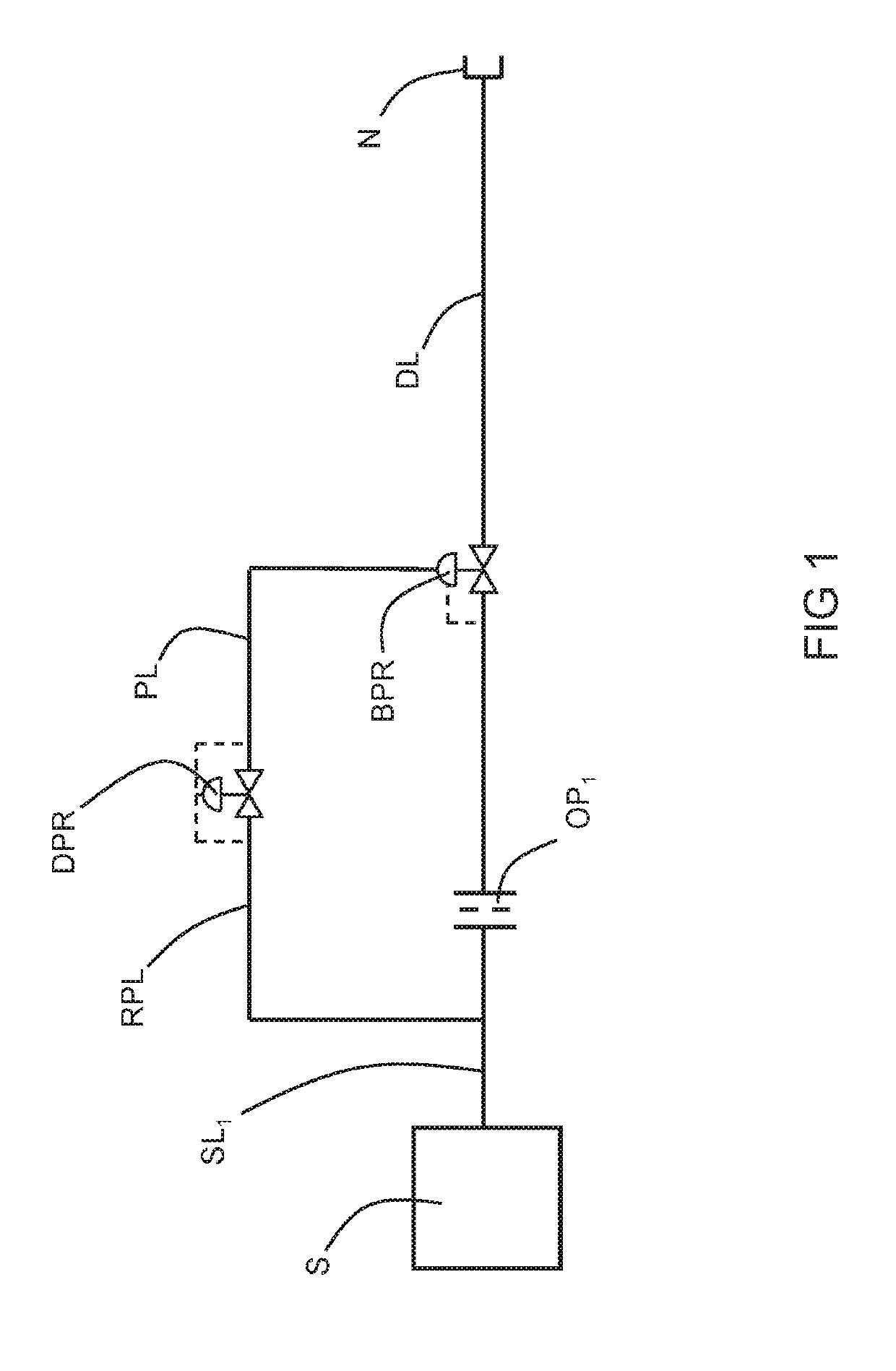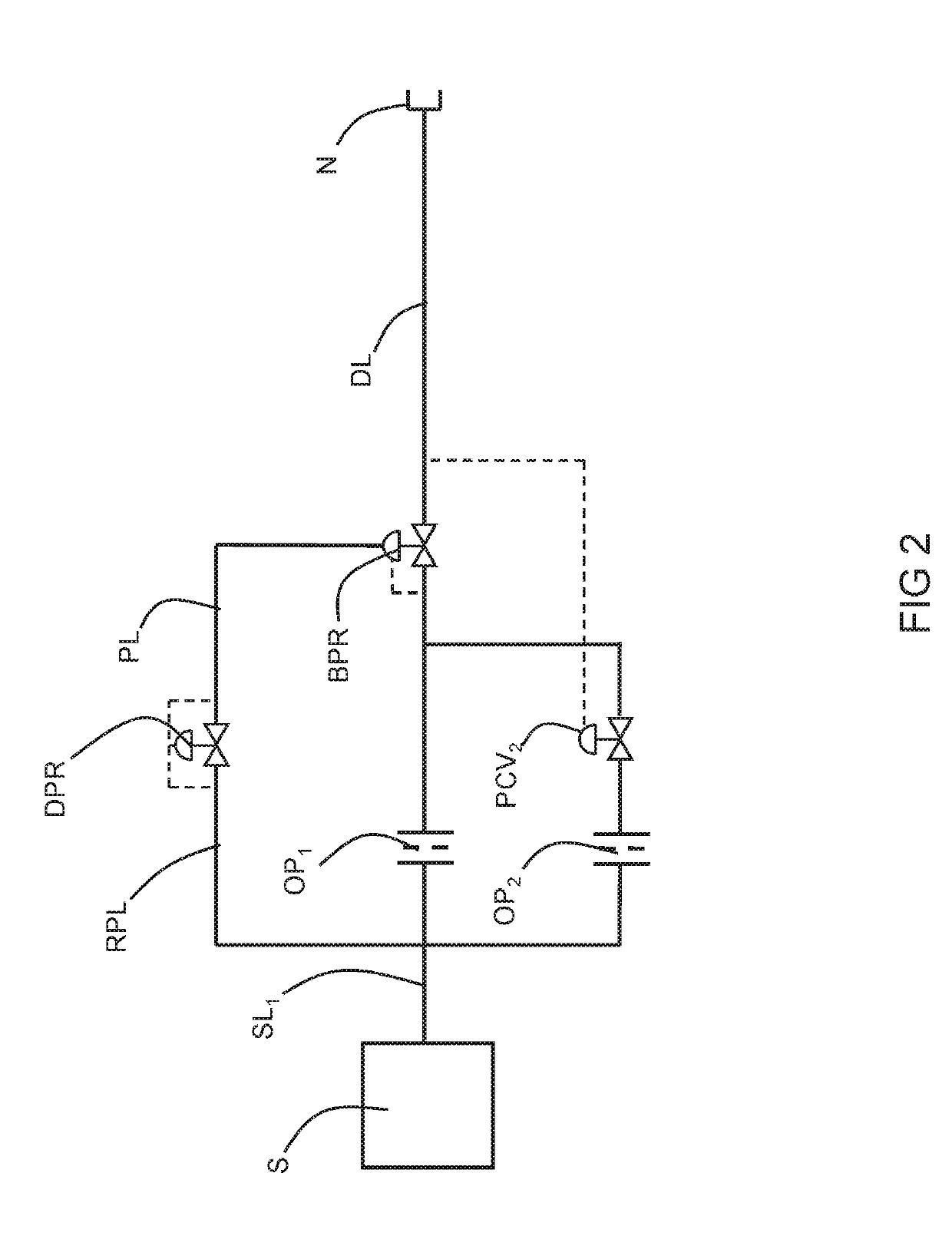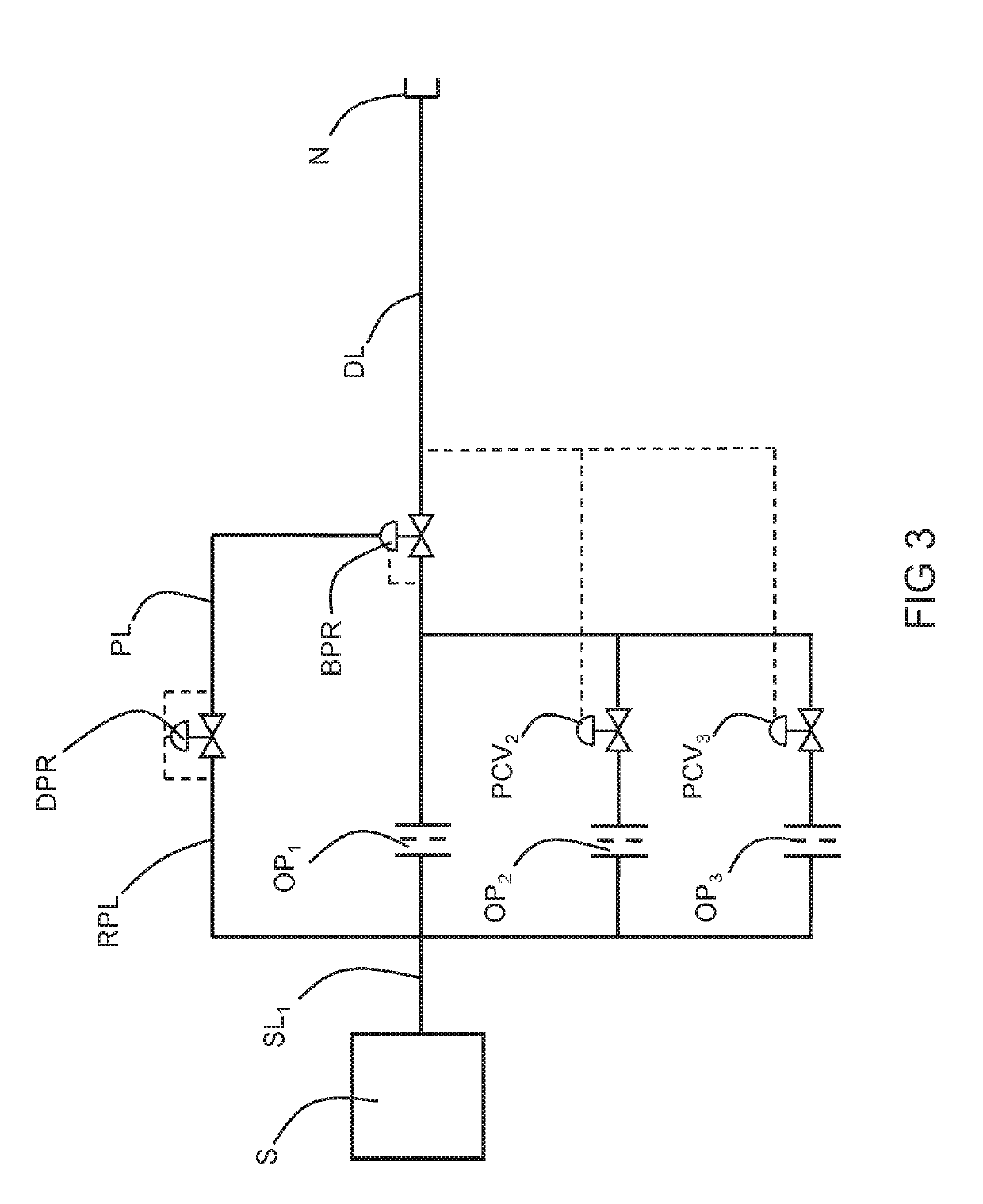Mobile hydrogen dispenser for fuel cell vehicles
a fuel cell vehicle and hydrogen tank technology, applied in the direction of container filling under pressure, gearing, container discharging methods, etc., can solve the problems of inconvenient veering off a particular route, affecting the commercialization of hydrogen-fueled fuel cell vehicles, and disrupting the hydrogen availability of vehicle tanks
- Summary
- Abstract
- Description
- Claims
- Application Information
AI Technical Summary
Benefits of technology
Problems solved by technology
Method used
Image
Examples
Embodiment Construction
[0028]When operation of a hydrogen filling station for filling hydrogen tanks of fuel cell vehicles must be stopped due to equipment failure, the primary maintenance goal is to return the station to full operation. In fulfillment of this goal, some repairs may require several hours to complete, and in rare cases, additional time may be required for a proper diagnosis of the problem. In the meantime, vehicle operators requesting a fill at the station may be stranded because the vehicle tank may not contain an amount of hydrogen that sufficient to drive the vehicle to a different, and operable, filling station. The mobile hydrogen dispenser of the present invention may be used to at least partially fill the tanks of these stranded vehicle operators so that they have at least enough hydrogen to drive to a nearby station for a more complete fill. The mobile hydrogen dispenser of the present invention may also be used to at least partially fill the tanks of fuel cell vehicles at hydrogen...
PUM
 Login to View More
Login to View More Abstract
Description
Claims
Application Information
 Login to View More
Login to View More - R&D
- Intellectual Property
- Life Sciences
- Materials
- Tech Scout
- Unparalleled Data Quality
- Higher Quality Content
- 60% Fewer Hallucinations
Browse by: Latest US Patents, China's latest patents, Technical Efficacy Thesaurus, Application Domain, Technology Topic, Popular Technical Reports.
© 2025 PatSnap. All rights reserved.Legal|Privacy policy|Modern Slavery Act Transparency Statement|Sitemap|About US| Contact US: help@patsnap.com



